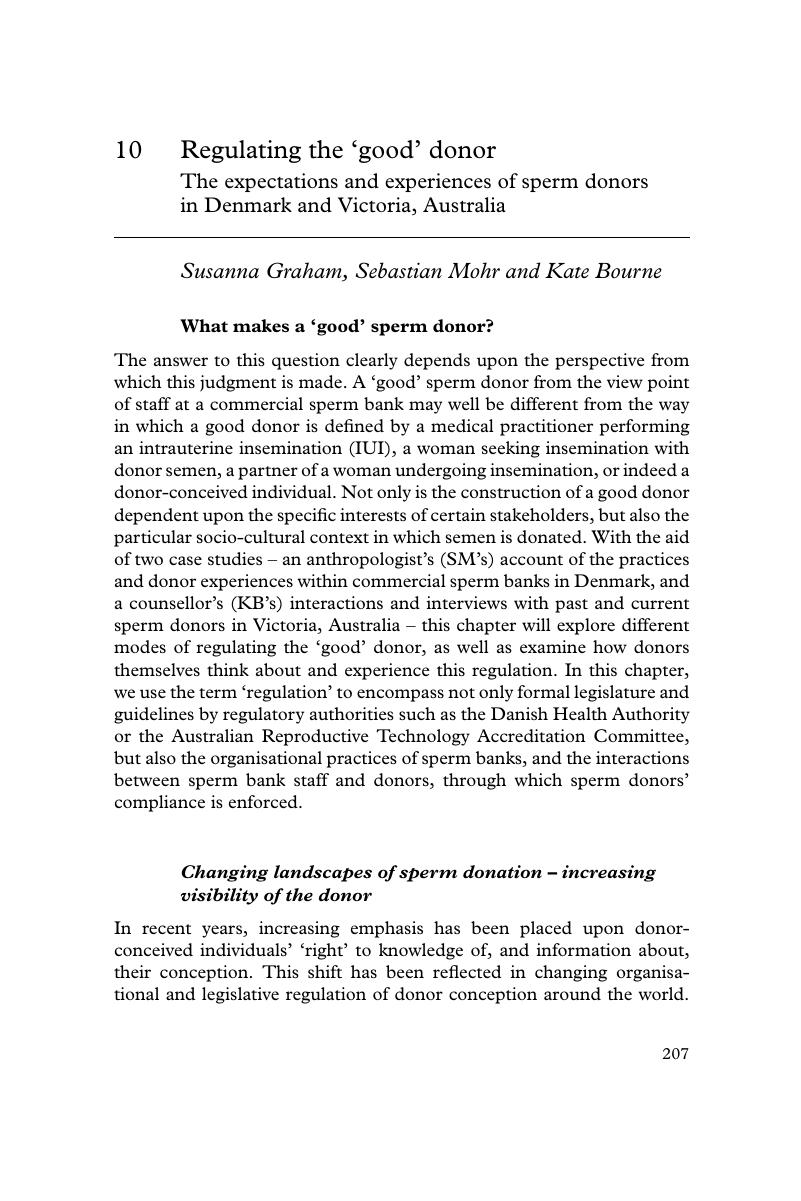Book contents
- Regulating Reproductive Donation
- Regulating Reproductive Donation
- Copyright page
- Contents
- Editors, contributors and discussants
- Book part
- Introduction
- 1 The development of governance and regulation of donor conception in the UK
- Part I International, cross-border and global issues
- Part II How many children per donor?
- Part III Donors
- 10 Regulating the ‘good’ donor
- 11 Gamete donor motives, payment and child welfare
- 12 Egg-sharing, motivation and consent
- Part IV Information about donors
- Index
- References
10 - Regulating the ‘good’ donor
The expectations and experiences of sperm donors in Denmark and Victoria, Australia
from Part III - Donors
Published online by Cambridge University Press: 05 March 2016
- Regulating Reproductive Donation
- Regulating Reproductive Donation
- Copyright page
- Contents
- Editors, contributors and discussants
- Book part
- Introduction
- 1 The development of governance and regulation of donor conception in the UK
- Part I International, cross-border and global issues
- Part II How many children per donor?
- Part III Donors
- 10 Regulating the ‘good’ donor
- 11 Gamete donor motives, payment and child welfare
- 12 Egg-sharing, motivation and consent
- Part IV Information about donors
- Index
- References
Summary

- Type
- Chapter
- Information
- Regulating Reproductive Donation , pp. 207 - 231Publisher: Cambridge University PressPrint publication year: 2016
References
References
Legislation
Australia
- 3
- Cited by

